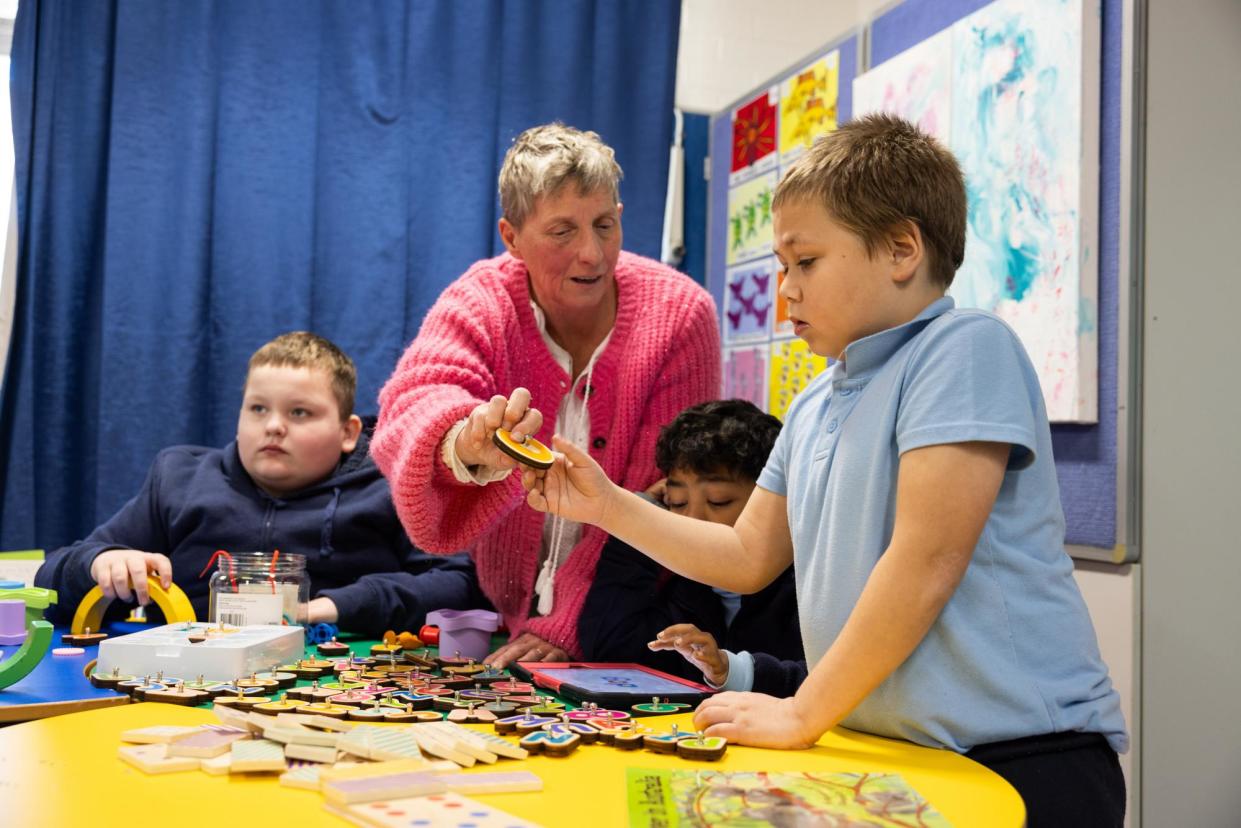NSW teachers to embrace ‘step by step’ explicit instruction method amid major syllabus shake-up

The New South Wales curriculum has had its biggest shakeup in five decades with better connections between subjects, more detailed concepts and skills, and a move away from the student-led approach to learning towards “explicit instruction”.
On Wednesday, new K-6 syllabuses for health, creative arts, human society and its environment, and science were released to teachers, with updated maths and English syllabuses in classrooms from this year.
The NSW education minister, Prue Car, said the curriculum reform would “reshape education” for decades to come.
Related: Reading, writing and … disinformation: should schoolchildren be taught media literacy like maths?
“For the first time, primary school teachers have a set of syllabuses that make sense together and will ensure students have a strong foundation upon which to build their knowledge,” she said.
Human society and its environment will replace the separate subjects of history and geography, including compulsory content on democracy and citizenship and ancient civilisations, while new health content will include the healthy use of digital devices and age-appropriate consent from kindergarten.
In science, students will study the human body for the first time, as well as the earth and solar systems, climate, energy, food chains and electricity.
‘Explicit instruction’
To understand the “explicit instruction” method for teaching in classrooms, it can help to think about learning to shoot a basketball, says one education expert.
A coach might explain where to stand, demonstrate the skill in action – throwing the basketball – and then new players might practise and model it.
When the same process is applied by teachers in classrooms for subjects like mathematics, it’s called explicit instruction. While schools across Australia have been increasingly adopting elements of the teaching model, on Wednesday the NSW government became the first state to mandate its use throughout the curriculum.
Under explicit teaching, lessons look very different to the alternative approach of “inquiry-led learning”, a method that focuses on students discovering information for themselves.
In English, for instance, students would read a newspaper article, analyse it themselves and respond in groups or independently. With explicit teaching, though, key vocabulary is explained and rehearsed, along with the context of the story, before the article is read together.
Nick Parkinson, senior associate in education at the Grattan Institute, says there are lessons from how musicians and athletes learn embedded in the pedagogy. “When students demonstrate the skill, they play the game.”
The New South Wales Education and Standard Authority hopes the new systemwill help disadvantaged students, particularly those living with disabilities, catch up to their peers.
Penelope Earp, the deputy principal of Wairoa School in Bondi, said the new syllabus would finally put students with disabilities “front and centre”, not hidden in an appendix.
Her school caters to students from kindergarten to year 12 with moderate and severe intellectual disabilities, most of whom have additional needs. To Earp, explicit teaching isn’t new.
“We’ve been embracing explicit teaching [informally] for two years now,” she said. “We’re very excited – it’s absolutely wonderful for children within a special school.”
The model dates back to the late 1960s but has had recent national and international traction. Parts of the US and England have moved to adopt it, while it is also popular in high-performing east Asian countries including Singapore and Hong Kong.
In a major shake-up, the syllabus overhaul also includes explicit content points to support students with intellectual disabilities across all subjects and ages, including the creative arts, health and PE.
“The primary syllabus didn’t have any content points for students with a disability – we were doing it on our own because there wasn’t anything,” Earp said.
“Now we’re given a platform, a guide for us as teachers, to know what it is our students need to cover within the syllabus and differentiate resources – whether someone has a severe intellectual disability or a vision or hearing disability.”
Related: Critical or troublesome? All you need to know about Naplan and its impact
Last year, Queensland announced a $35m commitment to introduce an explicit teaching approach to reading in state schools using synthetic phonics, which helps students break up words into individual sounds, while Victoria in June moved to embrace the explicit teaching of phonics from 2025 in prep to year 2.
The federal education minister, Jason Clare, said the reading wars were “over”, adding the federal government was also investing in short courses for current teachers to learn explicit teaching methods.
“We know evidence-based teaching methods work,” he said, applauding the NSW rollout.
The moves have not been without criticism. Dr Jill Brown, an associate professor in mathematics education at Deakin University, has argued that explicit teaching is not a “magic bullet”, nor should it be the single pedagogy in any classroom. She is echoed by the director of the Australian Mathematical Sciences Institute, Prof Timothy Marchant, who says both explicit teaching and inquiry learning have benefit.
The Australian Education Union’s Victorian branch reacted with “dismay” to the state government’s recent phonics announcement, arguing it came without consultation and ignored the more pressing issues of underfunding and chronic work shortages.
Parkinson welcomed a “systemic commitment” to the pedagogy, but said schools and teachers would need support to put it into place.
“It’s building on work already under way that’s found this pedagogy will benefit the largest number of students, but we shouldn’t underestimate the scale of implementation challenge,” he said.
“For teachers that haven’t been using it – it’s a significant shift.”


